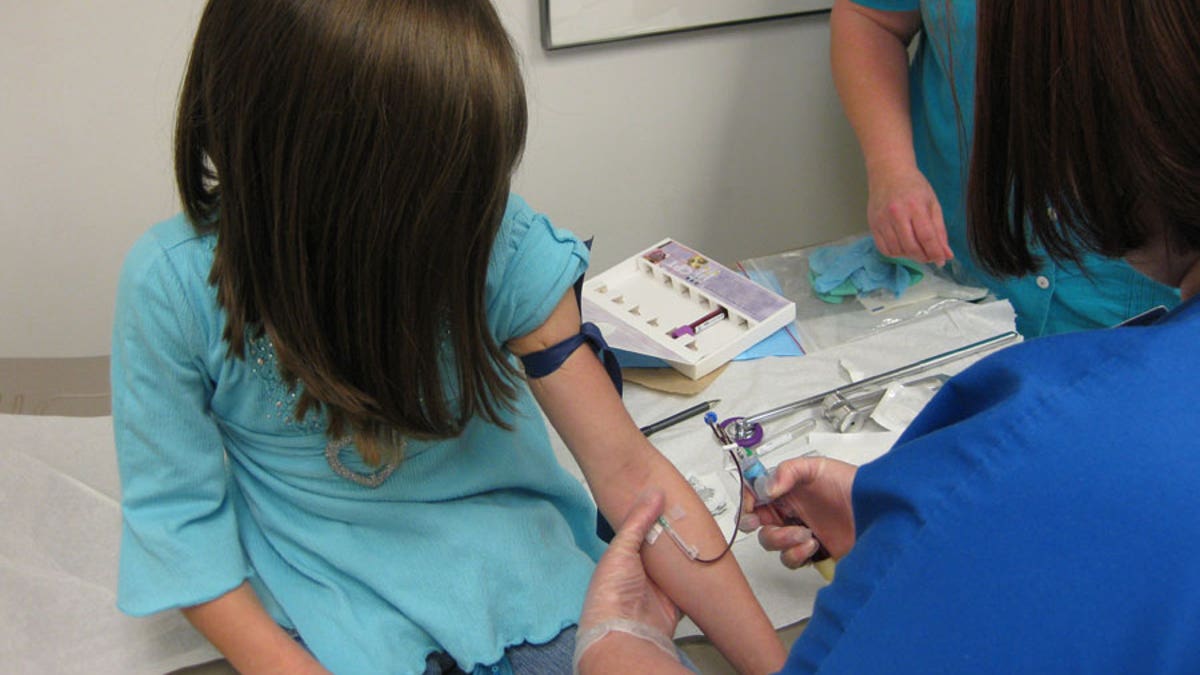
(Tara Blocker)
For the first time in 20 years, U.S. health officials have lowered the threshold for lead poisoning in young children.
The new standard announced Wednesday means that hundreds of thousands more youngsters could be diagnosed with high levels of lead. Too much lead is harmful to developing brains and can mean a lower IQ.
"Unfortunately, many, many more parents will be getting bad news," said Rebecca Morley, executive director of the National Center for Healthy Housing, a Maryland-based nonprofit focused on hazards to kids in homes.
The standard is for children younger than 6. Recent research persuaded experts and government officials that young children could be harmed from lead levels in their blood that are lower than the old standard.
Really, "there is no safe level of blood lead in children," said Christopher Portier, of the Centers for Disease Control and Prevention. He heads the agency's environmental health programs.
The CDC announced the change Wednesday, adopting recommendations made in January by an advisory panel of experts. At the same time, CDC officials acknowledged they don't have additional funds to help doctors or local health departments do more testing of children or find and clean up lead contamination.
Lead poisoning is detected through a blood test. The change means poisoning will be defined as 5 micrograms of lead per deciliter of blood. The old standard was 10 micrograms.
Under the old standard, lead poisoning in children had been declining in the U.S. Experts estimated that somewhere between 77,000 and 255,000 children had high levels of lead, though many of them are undiagnosed. The change could raise the count to 450,000 cases.
Lead - a metal that for years was common in paint and gasoline - can harm a child's brain, kidneys and other organs. High levels in the blood can cause coma, convulsions and death. Lower levels can reduce intelligence, impair hearing and behavior and cause other problems.
Usually, children who get lead poisoning live in old homes that are dilapidated or under renovation. They pick up paint chips or dust and put it in their mouth. Lead has been banned in paint since 1978. Children have also picked up lead poisoning from soil contaminated by old leaded gasoline, and from dust tracked in from industrial worksites.
Most cases of lead poisoning are handled by tracking and removing the lead source, and monitoring the children to make sure lead levels stay down. A special treatment to remove lead and other heavy metals is used for very high levels.
Specialists describe children as having lead poisoning only at those very high levels, but others use the term more broadly to describe any child with levels that can impact intelligence or cause other harm.
The CDC's threshold was last changed in 1991. The new standard was calculated from the highest lead levels seen in a comprehensive annual U.S. health survey. The CDC plans to reassess that level every four years.
Health officials have been focused on young children, who are most affected by lead poisoning. There is not a threshold for older children or adults, although pregnant women should have blood lead levels below 5 micrograms to protect the developing fetus. Most cases in adults come from manufacturing jobs or hobbies, but those numbers have also been declining.
Some health officials consider the CDC's action overdue. Cleveland and other cities in northeastern Ohio adopted a standard of 5 micrograms five years ago.
The CDC was following recommendations made to the agency in January by an advisory panel of experts. But Portier said the agency wasn't able to do everything the panel suggested.
For example, the panel said the CDC should do more to make sure no children are exposed to lead hazards. It also said all doctors should report high levels to local health departments, re-test the children to see if they improve, and help teach parents how to find and eliminate lead sources. The CDC agreed that should happen, but doesn't have the money or staff to bolster such an effort. Congress cut the CDC lead program's budget from about $29 million last year to $2 million.
In many places, it's up to city and county health departments to provide many of the services for lead poisoned kids, and those departments have lost more than 34,000 jobs in the last three years because of budget cuts.
The timing is unfortunate, Morley said. "But we wouldn't want to keep information from parents just because there's not money to provide the service," she added.
